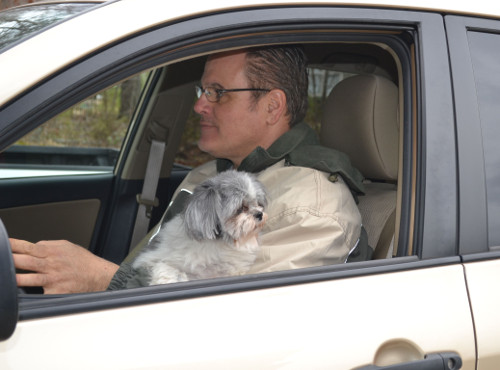 While the biggest road safety concern was once driving under the influence, it has been discovered that simply driving while distracted – while eating, applying makeup, or using a cell phone, for example -- can be a dangerous endeavor. Over the past few years, texting and driving in particular has proven to be a very serious road hazard; it has cost a number of lives, and 42 states have developed laws and campaigns against it.
While the biggest road safety concern was once driving under the influence, it has been discovered that simply driving while distracted – while eating, applying makeup, or using a cell phone, for example -- can be a dangerous endeavor. Over the past few years, texting and driving in particular has proven to be a very serious road hazard; it has cost a number of lives, and 42 states have developed laws and campaigns against it.
Now many states are focusing their attention on a new potential driving danger – one that has gone virtually unnoticed for years, but may prove to be just as much of a danger as texting and driving. This one involves the fairly common habit of driving with a pet on one’s lap.
The problem
There are no real statistics to say exactly how many accidents have been caused by drivers allowing pets on their laps in recent years. However, the potential danger is real. The AAA Foundation for Traffic Safety notes that taking your eyes off the road for just two seconds doubles your chance of a crash. It would only take two seconds for a frightened or excited pet to suddenly climb up onto your neck, attempt to jump out a window, claw you, or crawl under the brake pedal.
The facts
A 2011 AAA and Kurgo survey examined how and why people drive with their pets, as well as any potential distractions traveling with pets might cause. They found that nearly 60 percent of respondents had driven with their pets in the last month, and a full 31 percent admitted to being distracted by their pet while driving. Among the more common distractions: reaching in the backseat to interact with a pet; feeding and petting a pet; and taking a pet’s photo while driving.
Nearly one in five respondents admitted to either allowing their pet to sit on their lap or holding them while driving. Twenty-three percent admitted that they use their hands or arms to try and secure their pet when they hit the brakes.
The reasons
Respondents offered several reasons for not keeping their pets restrained in the car. The biggest of these reasons had to do with their pet’s perceived temperament; responders reasoned that if their pet was calm, there was no need for restraints. Many respondents had simply never given thought to the idea of using a pet restraint. Some felt that restraints weren’t necessary on short trips, while others noted that they wanted their dog to be able to put his head out the window.
The dangers
While potential accidents are reason enough to reconsider driving with your pet on your lap, there are other very real dangers to keep in mind. If a crash – even a minor one -- were to occur, a small pet could easily be crushed by a deployed airbag, or thrown from a car and injured. Many times pets escape from the vehicle after an accident and run away or run out into traffic. What’s more, during a crash an unrestrained dog can act as a dangerous airborne projectile. As AAA National Traffic Safety Programs Manager Jennifer Huebner-Davidson notes, “An unrestrained 10-pound dog in a crash at only 30 mph will exert roughly 300 pounds of pressure . . . Imagine the devastation that can cause to your pet and anyone in its path.”
The solution
States are taking notice of the potential dangers driving with a pet on one’s lap can cause. The state of Hawaii has made it illegal to carry a pet on one’s lap while driving, and many other states have either introduced, considered or enacted legislation related to unsafe pet travel. Some states have created specific ordinances regarding where in the car your pet can safely travel, and driving with your pet on your lap can earn you a traffic stop or a fine. Even in some states where there is no specific law pertaining to driving with a pet on your lap, you can still be cited for doing so under broader distracted driving laws.
It’s evident from the AAA study that increased awareness would likely also make a great deal of difference in how people drive with their pets. AAA notes that drivers who have heard of cases where unrestrained dogs were injured or caused injury to someone during a crash were three times more likely to use a restraint than those who had not.
While we love and enjoy traveling with our pets, the best way for them to ride along with us is to be safely secured in the back seat or cargo area of an SUV. There are any number of vehicle pet safety solutions that are comfortable for dogs and cats that still allow them enough freedom of movement to enjoy the ride. For a very little investment pet parents can have peace of mind by ensuring the safety of their furry kids.